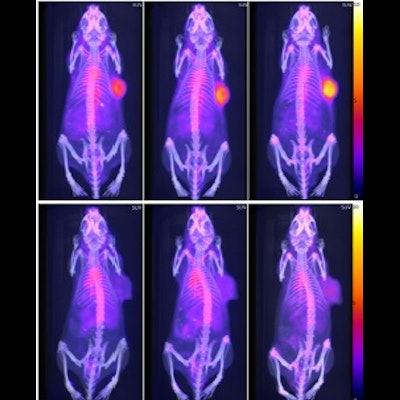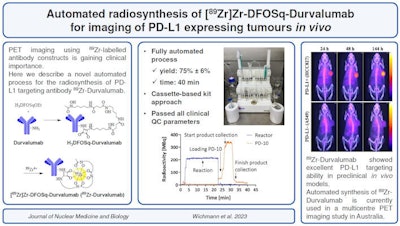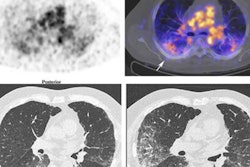
Researchers have developed a new process for automatically synthesizing zirconium-89 (Zr-89)-based PET radiotracers -- a step that can facilitate larger numbers of scans in cancer patients in clinical trials, according to the group.
A team led by Dr. Christian Wichmann of the Olivia Newton-John Cancer Research Institute in Heidelberg, Australia, tested a method for automatically producing Zr-89-labeled proteins using a MultiSyn radiosynthesizer (iPHASE technologies). The method produced quality PET imaging radiotracer on the same day and offers an alternative to time-consuming manual protocols, the authors suggested.
"The method should be broadly applicable to other proteins and has the potential for clinical impact considering the growing number of clinical trials investigating Zr-89-labelled antibodies," the group wrote. The study was published May 16 in Nuclear Medicine and Biology.
Clinical cancer trials of immunotherapy drugs typically use manual methods to synthesize Zr-89 radiotracers (so-called immuno-PET tracers) for imaging the effects of the drugs. While this is suitable for preclinical and small clinical bioimaging trials, larger studies in particular may benefit from higher yields and a more consistent process, the authors explained.
Recently, the use of advanced bifunctional chelators -- groups of molecules capable of binding to metal ions -- have demonstrated improved stability in lab studies, with the technology slowly making its way into the clinic, they added.
In this study, the researchers leveraged these developments to automatically synthesize Zr-89-radiolabeled Durvalumab (Imfinzi, AstraZeneca), an immune checkpoint inhibitor approved for treating metastatic non-small cell lung cancer (NSCLC) in patients whose tumors have not responded to chemotherapy.
 A graphical abstract describing an automated method for radiosynthesizing Zr-89-based PET radiotracers. Image courtesy of Nuclear Medicine and Biology through CC BY 4.0.
A graphical abstract describing an automated method for radiosynthesizing Zr-89-based PET radiotracers. Image courtesy of Nuclear Medicine and Biology through CC BY 4.0.To date, only one study has published an automated procedure describing Zr-89-labeling of monoclonal antibodies, and reported isolated radiotracer yields between 60% and 75% and a process time of 77 minutes, the researchers noted.
Comparatively, after five runs, their method produced consistent Zr-89 DFOSq-Durvalumab radiotracer yields of 75% and an automatic process time of 40 minutes, according to the findings. In addition, the group tested the radiotracer in mice, with Zr-89 DFOSq-Durvalumab showing excellent ability on PET imaging to detect cancer.
Further, the group noted they plan to employ the method in a large clinical trial using Zr-89 DFOSq-Durvalumab PET imaging before, during, and after patients undergo Durvalumab therapy to further characterize the drug's effects.
Ultimately, the manual synthesis of Zr-89-labeled radiotracers can take hours, and it also exposes technicians to radioactivity from the isotope, the authors wrote. Their method is fast and high-yielding and is now a valid alternative, the group concluded.





















